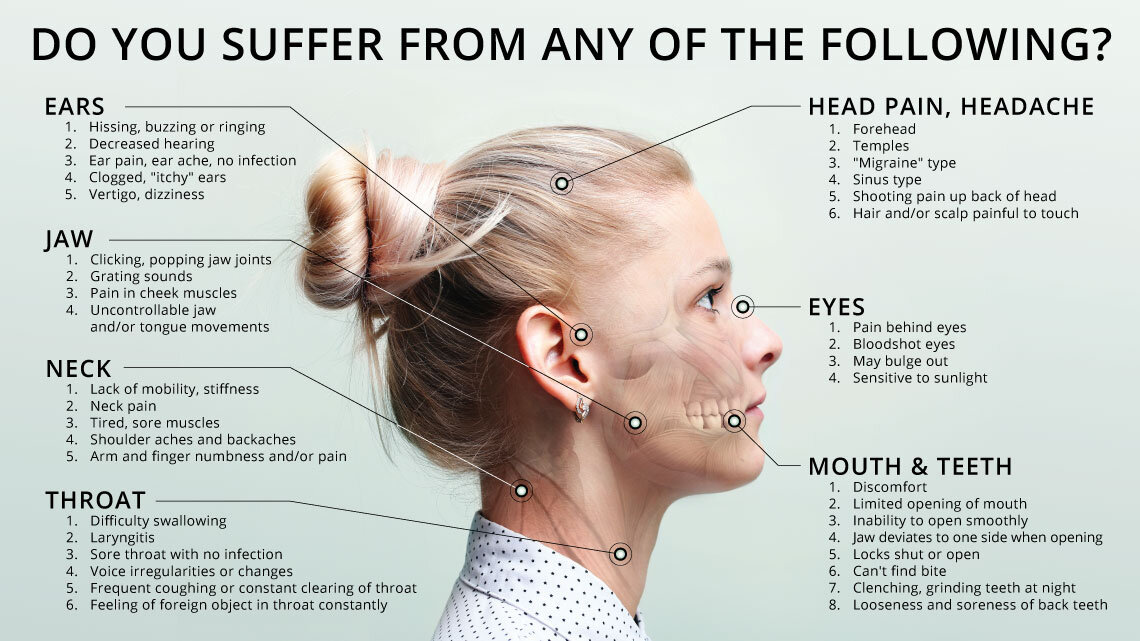
Jaw Pain / TMD
Jaw Pain and Headaches
This is a topic that I am very passionate about. I have struggled myself with headaches and migraines my entire life and in more recent years, jaw pain. It is estimated that 20-25% of the adult population suffers from symptoms involving the TMJ (temporomandibular joint).
The TMJ is one of the more complex joints in the human body. It is durable and meant to last a lifetime, but unfortunately TMJ disorders are on the rise. There are many different ways to alleviate jaw pain, but one treatment modality may not work for everyone, so determining the root cause of symptoms should always be investigated. A large number of our orofacial muscles are connected to the joint to facilitate its movement, which is where Myofunctional Therapy comes in to play an important role in treating TMJ disorders.
How Can Myofunctional Therapy Help?
Orofacial Myofunctional Therapy (OMT) helps to treat jaw pain by focusing on improving the position of the tongue. A proper tongue posture is crucial for jaw stability and support, and helps to relax tense jaw muscles. When there is poor support for the TMJ, orofacial muscles compensate for what the tongue should be doing, resulting in tension. Tension in the orofacial muscles and jaw are significant factors in initiating headaches. A tongue tie or tongue thrust swallow pattern can also be closely related to TMJ symptoms and chronic headaches.
Studies show that Myofunctional Therapy can significantly decrease jaw pain and headaches if the underlying cause is related to the tongue and orofacial muscles.
Temporomandibular Disorders (TMD)
TMD refers to any pain, discomfort, dysfunction, or tension related to the jaw. Everyone is unique in why they experience jaw pain and headaches. Simple remedies such as massage, over-the-counter anti-inflammatories or hot/cold compresses may provide short term relief, but unless the root cause is addressed, the pain may become chronic and worsen over time.
Common symptoms of TMD include:
Jaw and facial pain, tension, stiffness
Pain and tension radiating in the neck, shoulders and upper body
Earache
Hearing difficulties
Tinnitis (ringing in the ears)
Headaches
Toothaches
Clicking, popping or grinding sounds when opening the mouth, yawning or chewing
Clenching or Grinding of the teeth
Difficulty opening the mouth wide or yawning
Difficulty chewing
Dizziness
Jaw locking open
The Team Approach
Because the contributing factors involved can be so complex, managing and treating TMJ pain and other TMD symptoms often requires a skilled multi-disciplinary team.
Myofunctional Therapy is a great place to start because it is non-invasive and studies have shown that it can significantly decrease jaw pain and headaches, especially when the underlying issue is tongue and muscle related.
If needed, we will send a referral or recommend other healthcare providers with training in treating TMD, to help clients achieve the best results.


